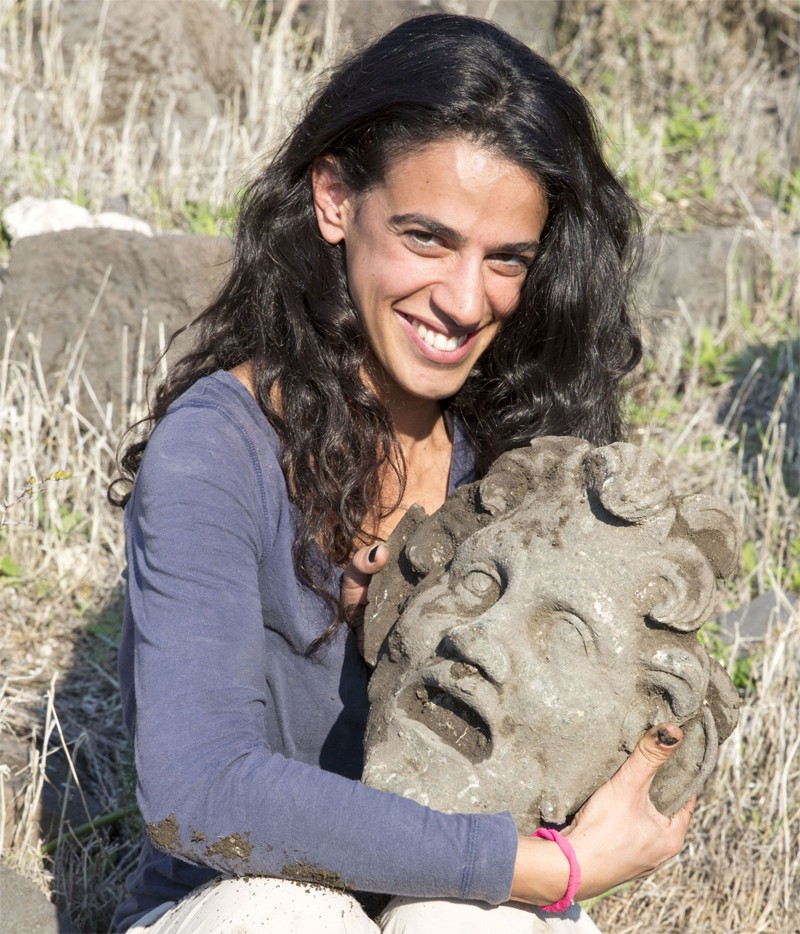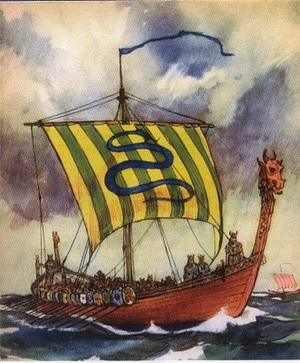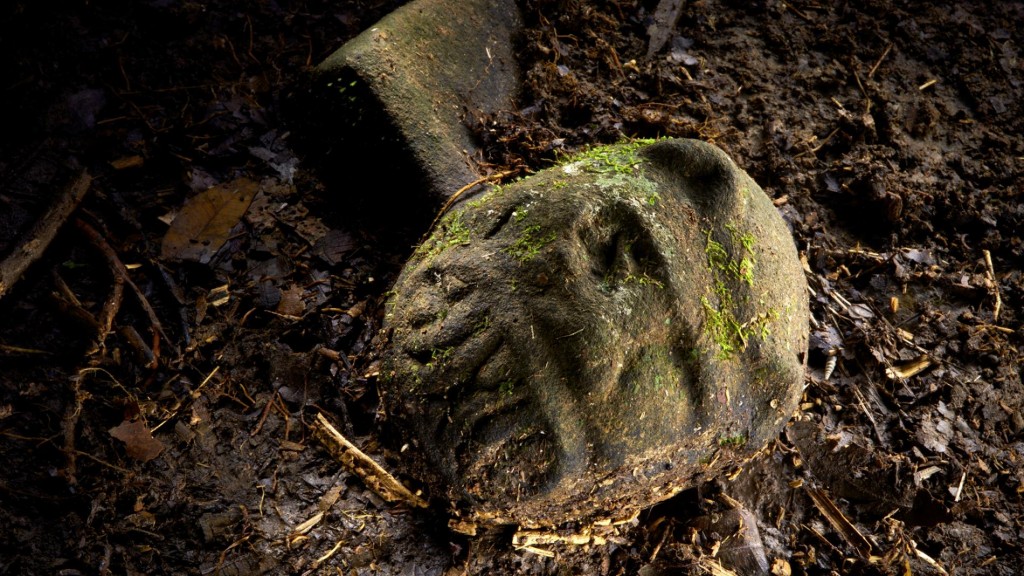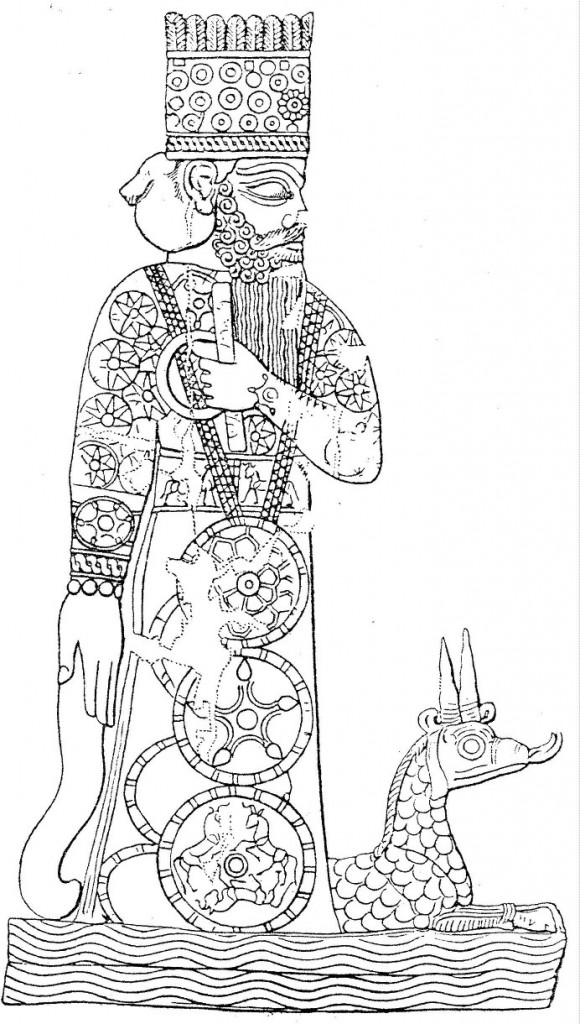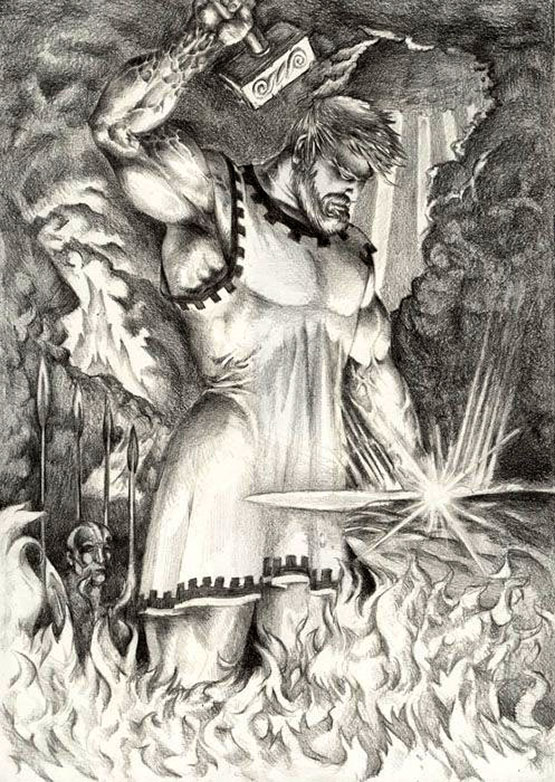(Source: Franck Goddio) – Thonis-Heracleion (the Egyptian and Greek names of the city) is a city lost between legend and reality. Before the foundation of Alexandria in 331 BC, the city knew glorious times as the obligatory port of entry to Egypt for all ships coming from the Greek world. It had also a religious importance because of the temple of Amun, which played an important role in rites associated with dynasty continuity. The city was founded probably around the 8th century BC, underwent diverse natural catastrophes, and finally sunk entirely into the depths of the Mediterranean in the 8th century AD.
Prior to its discovery in 2000 by the IEASM, no trace of Thonis-Heracleion had been found. Its name was almost razed from the memory of mankind, only preserved in ancient classic texts and rare 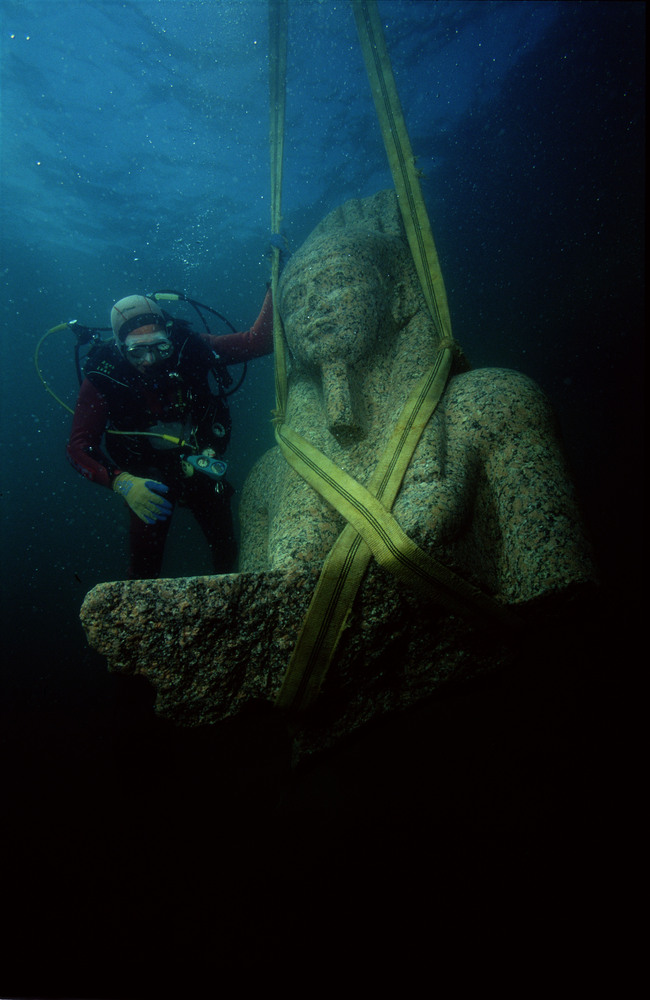 inscriptions found on land by archaeologists. The Greek historian Herodotus (5th century BC) tells us of a great temple that was built where the famous hero Herakles first set foot on to Egypt. He also reports of Helen’s visit to Heracleion with her lover Paris before the Trojan War. More than four centuries after Herodotus’ visit to Egypt, the geographer Strabo observed that the city of Heracleion, which possessed the temple of Herakles, is located straight to the east of Canopus at the mouth of the Canopic branch of the River Nile.
inscriptions found on land by archaeologists. The Greek historian Herodotus (5th century BC) tells us of a great temple that was built where the famous hero Herakles first set foot on to Egypt. He also reports of Helen’s visit to Heracleion with her lover Paris before the Trojan War. More than four centuries after Herodotus’ visit to Egypt, the geographer Strabo observed that the city of Heracleion, which possessed the temple of Herakles, is located straight to the east of Canopus at the mouth of the Canopic branch of the River Nile.
With his unique survey-based approach that utilises the most sophisticated technical equipment, Franck Goddio and his team from the IEASM, in cooperation with the Egyptian Supreme Council of Antiquities, were able to locate, map and excavate parts of the city of Thonis-Heracleion, which lies 6.5 kilometres off today’s coastline. The city is located within an overall research area of 11 by 15 kilometres in the western part of Aboukir Bay. Franck Goddio has found important information on the ancient landmarks of Thonis-Heracleion, such as the grand temple of Amun and his son Khonsou (Herakles for the Greeks), the harbours that once controlled all trade into Egypt, and the daily life of its inhabitants. He has also solved a historic enigma that has puzzled Egyptologists over the years: the archaeological material has revealed that Heracleion and Thonis were in fact one and the same city with two names; Heracleion being the name of the city for the Greeks and Thonis for the Egyptians.
—————————————————–
(Source: Huffington Post) – According to the Telegraph, leading research now suggests that Thonis-Heracleion served as a mandatory port of entry for trade between the Mediterranean and the Nile.
So far, 64 ancient shipwrecks and more than 700 anchors have been unearthed from the mud of the bay, the news outlet notes. Other findings include gold coins, weights from Athens (which have never before been found at an Egyptian site) and giant tablets inscribed in ancient Greek and ancient Egyptian. Researchers think that these artifacts point to the city’s prominence as a bustling trade hub.
Researchers have also uncovered a variety of religious artifacts in the sunken city, including 16-foot stone sculptures thought to have adorned the city’s central temple and limestone sarcophagi that are believed to have contained mummified animals.
For more photos, visit Goddio’s Heracleion website.
Experts have marveled at the variety of artifacts found and have been equally impressed by how well preserved they are.
“The archaeological evidence is simply overwhelming,” Professor Sir Barry Cunliffe, a University of Oxford archeologist taking part in the excavation, said in a press release obtained by The Huffington Post. “By lying untouched and protected by sand on the sea floor for centuries they are brilliantly preserved.”
A panel of experts presented their findings at an Oxford University conference on the Thonis-Heracleion excavation earlier this year.
SOURCES:
Read more from the Huffington Post:
Read more from Franck Goddio. Frank is a pioneer of modern maritime archaeology. As the grandson of Eric de Bischop (navigator, writer, inventor of the modern catamaran, and specialist of ancient navigational routes in the South Pacific), a passion for the sea and wanderlust runs in Franck Goddio’s veins.

Moe is the founder of GnosticWarrior.com. He is a father, husband, author, martial arts black belt, and an expert in Gnosticism, the occult, and esotericism.

